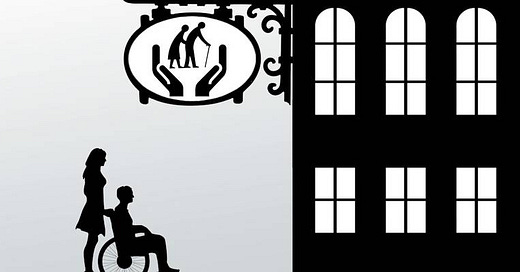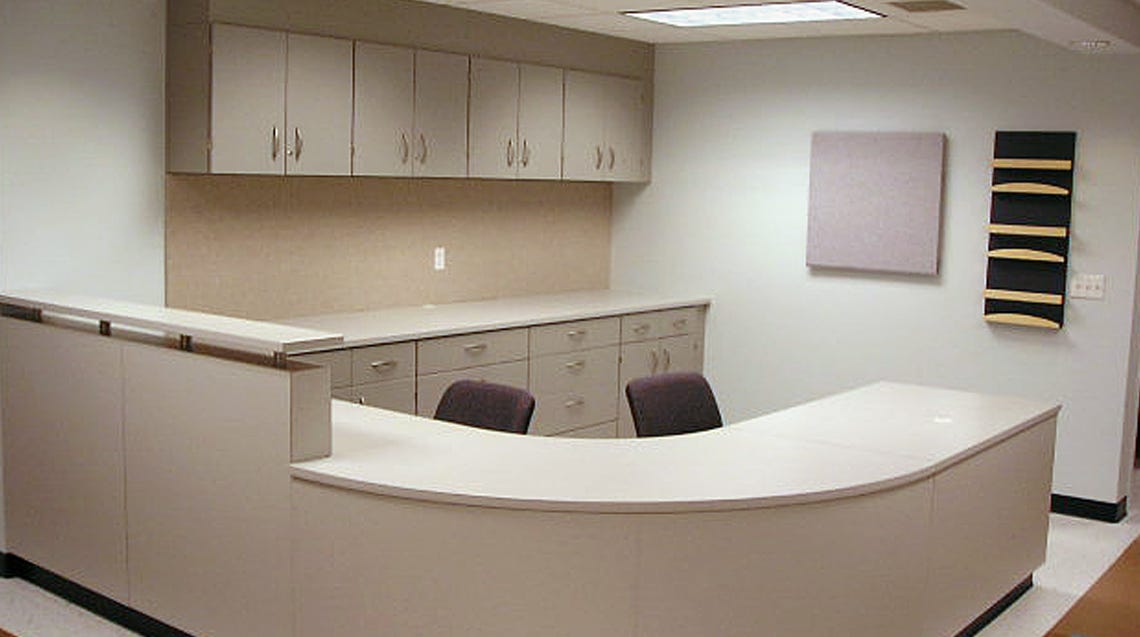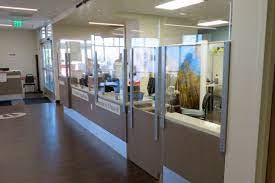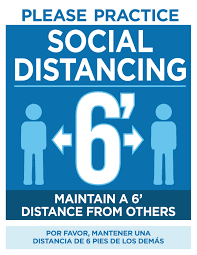Where Old People go to be Forgotten: Nursing Homes are "Total Institutions" Again
Nursing homes have largely given up on the fiction of being "homelike," and have instead embraced their roots as total institutions - where family, individuality, spirituality and agency go to die.
“A total institution may be defined as a place of residence and work where a large number of like-situated individuals cut off from the wider society for an appreciable period of time together lead an enclosed formally administered round of life” (p. 11, from Asylums, by Erving Goffman, 1961).
When I first began working in the long-term care industry a number of years ago, it seemed like the industry was in a long-term and rather appealing dance with postmodernist concepts with the aim of shifting nursing homes away from the cold, total institution model described above and into “homelike environments,” typified by sayings such as “this is your home (to nursing home residents) - I just work here.”
The post-modernist push to remake nursing homes into humanizing, personalized, places of care even extended into the realm of the purely semantic - such as the push to call long-term care residents residents, and not patients (even though nursing homes are hospitals) - or at the US Department of Veteran’s Affairs, where in 2008 they renamed their network of over 100 nursing homes as “Community Living Centers” (known by the acronym of CLCs).
I recall myself several years ago when we started making a number of changes in our nursing home in the interest of making it more “homelike” (this was in response to a push by one of our accrediting bodies that came to do a site visit) - examples:
we started keeping our snack basket at the front of the nursing station, (This lasted about a month - we found that there were certain residents who would clean out the basket of the cookies and crackers in it and leave nothing for the others, and it wreaked havoc with blood sugars).
we started creating “Getting to Know You” bios about our residents, with their permission, and putting them in a centralized location in the hallway. On it is pictures, details about their previous occupations, where they were born, etc. (We still do this)
we started talking about getting rid of our nursing stations, because they were “too institutional.” The idea was to replace them with instead computers, and chairs, but otherwise an “open concept” where residents would not be blocked off from nurses or ward clerks (see below for a traditional nursing station you might see at a traditional nursing home):
Obviously, the idea of “open concept nursing stations” are now history - the idea is to now provide *more* separation between nursing staff and residents, and not less - with plexiglass:
Or with signs festooned all over the nursing home, not-so-subtly warning people to stay apart:
Or with the (*still* in my nursing home) everpresent masks and face shields on staff:
One Step forward… Five Steps Backward
Over the last nearly 20 years I’ve been in the long-term care biz, I’ve seen a slow forward march in the the progress of nursing homes moving from being “total institutions” towards the ideal of being a “homelike environment.”
Not quite home, but better than a hospital. Sounds great, right?
I’d say that COVID has completely reversed that process - we’ve gone backwards.
If you had panic-inducing “social distancing” signs and plexiglass barriers all about your home, would you consider that homey and welcoming?
If your caring family members were taking care of you at home, would you consider it “homelike” if they were all masked and face-shielded?
What if all your visitors to your home were required to wear masks? Or to be temperature checked on entry?
What if when you ate, you were required to eat alone, in your room - or if you were allowed to be in a room with other people eating, you were only allowed to eat at a table by yourself?
Would you consider any of these things homelike?








Your posts make me so sad for this precious group of people. Brilliant writing. In medicine, we need to always ask if what we’re doing is working, helping or harming. I obviously, none of the interventions made including 6 foot signs, plexiglass or masks have worked. Likely, your residents got infected no matter what. At my clinic (we’re an independent clinic but I have liberal partners), I pushed back against all of the requirements when our staff got sick anyway. None of what we did made a difference and it wasted our time. Who can you push back against in senior care? Sometimes even asking the questions and pointing out the absurd helps. I would empower the families of the residents to start pushing back. I did this at the hospital, too. I told my patients that when they wrote reviews to comment that their visit was made worse by not being able to see faces. We don’t mask at my hospital anymore. But I am in the south.
No^6. The inability of our society to recognize and address these shortcomings reflect a general decline of the civilization we have built. Any one of us could wind up inheriting tomorrow the legacy of the care we show today.